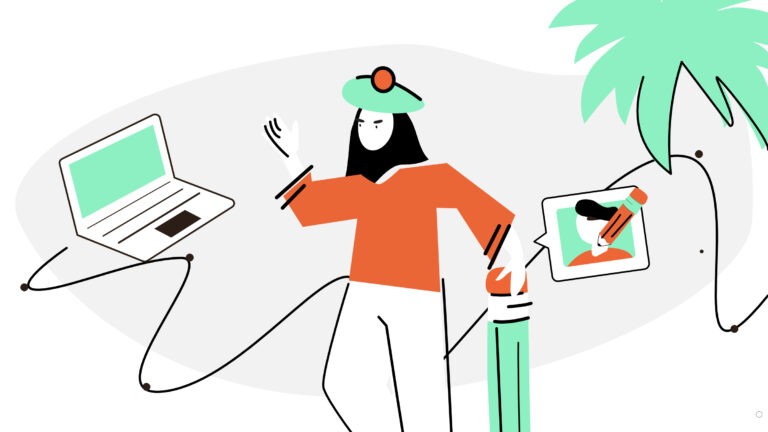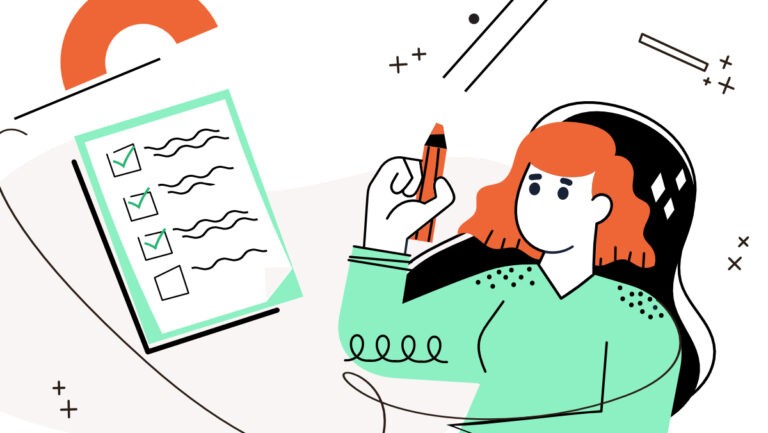Every designer-client relationship starts with a design brief. This is a step where first impressions are set, and all the preparations for further work are made. If you’re still online asking ‘how to prepare a design brief’, look no more. Today we’ll guide you through the basic structure of a successful design brief, with some tips and tricks.
☝🏻 Tip: Work on briefing together with the client, so you gather all the necessary information.
Design Brief: What to ask?
![The Art of A Successful Design Brief: What to Ask Your Client? [Complete Guide + Tips] 1 design brief](https://gingersauce.co/wp-content/uploads/2021/01/pasted-image-0-16-1.png)
General info
The first section to go over will be, of course, some general information.
- Brand’s name.
- Industry.
- The problem they are here to solve.
- What do they promise to their customers?
- Budget. Always decide on the budget beforehand, so that you won’t have any misunderstandings later. If during the work you might go over that number, make sure to discuss it with the client.
- Do’s and Don’ts. Every client has some vision of a design they want, make sure you get that info, along with the styles, fonts, everything the client on the contrary doesn’t want to see.
Why is this step important to go over before moving to the next one?
Before diving into the strategy, it’s important to learn what is the brand you’re going to work with, and the scope of the cooperation.
![The Art of A Successful Design Brief: What to Ask Your Client? [Complete Guide + Tips] 2 brand essence how to write mission statement](https://gingersauce.co/wp-content/uploads/2021/01/Screenshot_2-3.png)
Brand Essence
This is the part where you truly get to know the project you’re working with. The way they position themselves, and how they address their customers.
- Mission. Ask the client to finish the sentence “The project exists to..”
- Vision. Ask the client to finish the sentence “We believe that..”
- Values. Ask the client to state the beliefs that drive their business.
Make sure that upon finishing this part the client has given you a full understanding of the brand’s positioning. If not, do not be hesitant to ask the client to elaborate. The success of your design will depend on how well you understand how the brand presents itself.
Why is this step important to go over before moving to the next one?
In order to further make any conclusions based on the audience, you need to understand the founder’s vision, why they started the business, what’s the purpose that connects the team and make them move.
Competitors
![The Art of A Successful Design Brief: What to Ask Your Client? [Complete Guide + Tips] 3 brand competitors](https://gingersauce.co/wp-content/uploads/2021/01/pasted-image-0-1-2.png)
Any brand nowadays has competitors. It’s a challenge to make a brand stand out, and design solutions are one of the ways to help with that. In order to offer a client visuals that will top the competitors you need to know the following points:
- Strengths. Ask: What do competitors do better? Maybe something in their design is off? Knowing what buttons to push will make your design solutions a lot more valuable.
- Weaknesses. The competitors’ weaknesses are a window for providing better services. Ask your client to define all these points.
- Ask: Why you? What are the brand’s key features to highlight?
☝🏻 Tip: Do not only rely on the brief. Do your own research, and check out the competitors by yourself. Chances are, you might find some opportunity your client hasn’t noticed. Moreover, it’s a great way to show your client how interested you are in doing a good job.
Why is this step important to go over before moving to the next one?
To learn how to place accents.
Target Consumer
![The Art of A Successful Design Brief: What to Ask Your Client? [Complete Guide + Tips] 4 target audience how to define](https://gingersauce.co/wp-content/uploads/2021/01/pasted-image-0-2-2.png)
Design largely depends on the audience it caters to: the color and style choices, the fonts, typography, etc. For that purpose, your client needs to provide you details on what consumers it’s targeting.
- Audience. Ask: Who is your target audience? What are their values and lifestyle?
- Psychology. Ask: What is the psychological portrait of the person you’re selling your services to?
- The reason. Ask: Why this exact person should use your product, what should they feel like after using it?
☝🏻 Tip: If you’d like to help your client to describe the target audience of their brand, you can offer them to use this Customer Dossier as a guide.
Why is this step important to go over before moving to the next one?
For the designer to be able to clearly describe a person they will be catering to in terms of their design choices and techniques.
Differentiation
![The Art of A Successful Design Brief: What to Ask Your Client? [Complete Guide + Tips] 5 unique selling proposition](https://gingersauce.co/wp-content/uploads/2021/01/pasted-image-0-3-2.png)
One of the best selling points of any product is the one thing they stand out by, something that makes it unique. As a designer, you should always know what is the main advantage of the project you’re working on in order to use visual aids to promote it.
- Unique selling proposition. Let them complete this sentence:
My brand represents the only _________(product category, service, product) that is ________( how is it different from others?).
Why is this step important to go over before moving to the next one?
Every precious step was needed to clearly understand the unique selling proposition. If it still cannot be done, it means you have to go over everything again, and analyze all the points above. If the selling proposition is formed, you can now think about how to bring it to life.
Personality
![The Art of A Successful Design Brief: What to Ask Your Client? [Complete Guide + Tips] 6 brand personality](https://gingersauce.co/wp-content/uploads/2021/01/pasted-image-0-4-2.png)
Now it’s time to get acquainted with the brand, as if it were a person. This part will let you know how the brand looks, feels, what character traits it has and communicates. This information will give you plenty of advice on what style to pursue, color schemes to use, shapes to add, etc.
- Personality. Ask: What is the personality of your brand?
- Tone of voice. Ask: What is the tone of voice your brand uses to communicate its message? Is it funny or professional? Nurturing, or rebellious?
- Brand words. Ask to: Provide a few words that describe your brand.
☝🏻 Tip: There are plenty of creative ways to help a client “open the soul” of their company. Use interesting approaches while working at the brief stage – this may help a client find insights. Here are some of our favorite tricks to help the client find insights:
1. Archetypes Part 1 | Part 2.
Want More Design Brief Tips from Gingersauce?
We’re all done with the general structure of the design brief that will help you get the most out of your cooperation with a client. However, we also prepared a PDF document collecting all this + a lot more tips and tricks you definitely need to know.
In order to receive the document, all you need to do is:
1) Subscribe to our Instagram.
2) Send us a direct message with the text “8secrets”
3) Receive a doc.
Easy, isn’t it? The document will help you create design briefs that will have a lasting impression on your client, and also let you learn everything needed to do your job to its utmost perfection.
Made a design visual by the design brief? Present it properly!
Imagine yourself presenting all your prototypes professionally in separate brand books, for example. Cool, right? This way, you’re presenting not only a single visual, but you’re also offering ready brands to choose from. This will help your client to make their pick a lot faster, with fewer edits and misunderstandings.
Gingersauce is a professional tool for creating brand guidelines, that combines smart automation and your creativity. It’s a professional tool – meaning it won’t do a half-baked job, leaving you with a mediocre result.
Gingersauce will help you gather all your visuals and make a professional presentation that will impress your client. You can download a created brand book right away – it will look promising even with no customization. Or, you can play around with it to get even more epic guidelines!




